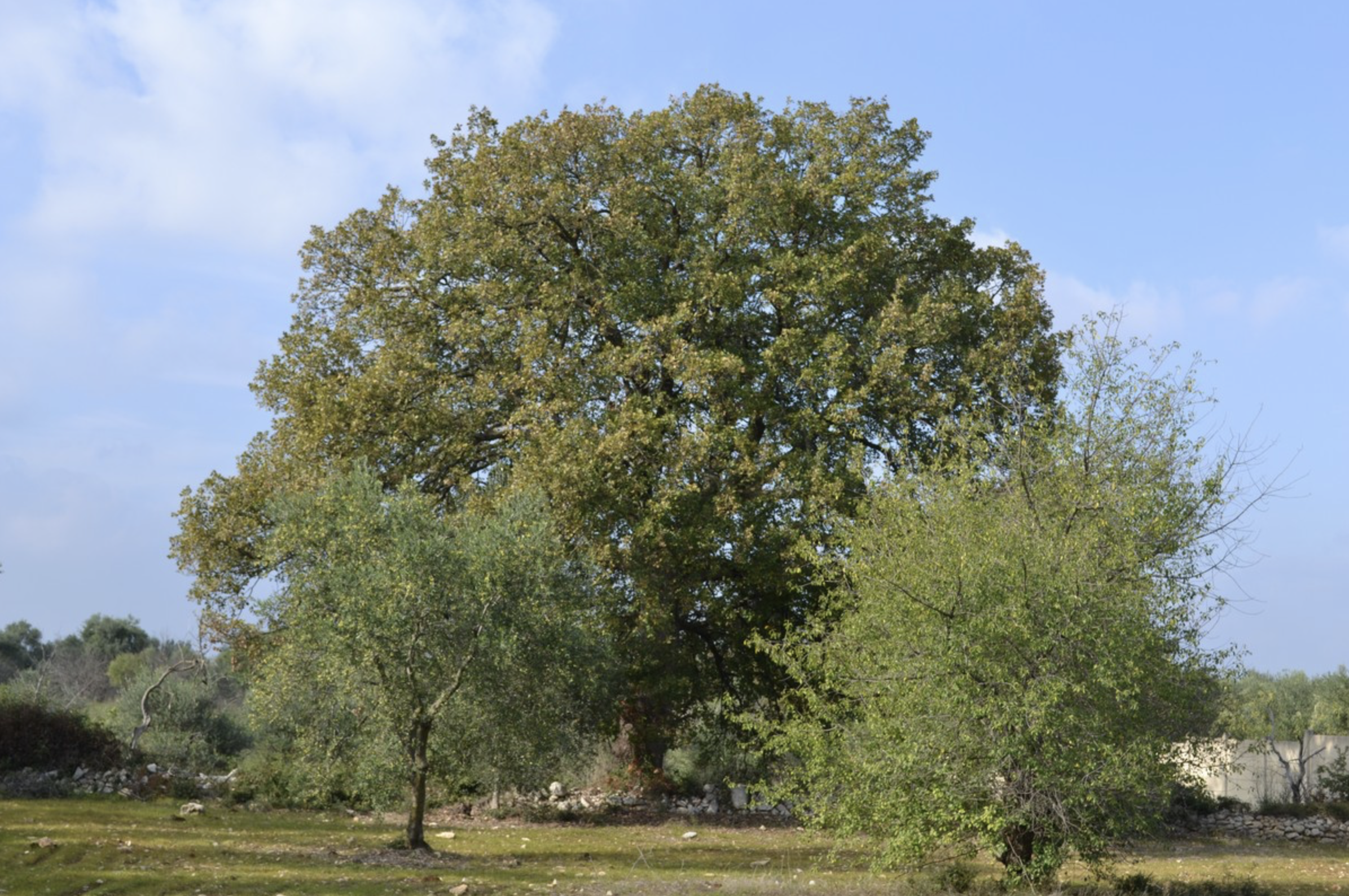
The Italian Oak of Sannicandro
This post is also available in:
 Italiano (Italian)
Italiano (Italian)
Another Italian oak (Quercus farnetto Ten.) of unusual size can be found at the gates of Sannicandro, near Lama Badessa.
It’s an impressive tree, just like the Italian oak of Bitritto. Both specimens, quite majestic in their size, are truly exceptional as this species usually grows very slowly, hardly ever reaching any impressive dimension.
Photo source: www.barinedita.it
Botanical card:
Quercus farnetto Ten.
The Italian oak is a tree native to the Black Sea area and belongs to the Fagaceae family. It is sensitive to cold climates with frequent frosts and prefers acid soils, growing up to 2.624 ft of altitude. Thanks to a very strong and deep root system, the Italian oak can withstand even short periods of drought.
In Italy, it suffers from the competition with other species, a typical disadvantage of these oaks that also limits their range of distribution. They grow in Tuscany and Maremma, but get more and more abundant in Lazio, all the way to Calabria. In Basilicata, there are many Italian oaks in the Appennino Lucano National Park, on the Mount Volturino massif.
The Italian oak wood scope of application is similar to that of the common oak, including furniture, barrel staves, shipbuilding, and railway sleepers. It is also good fuel and produces excellent charcoal. In Western Europe, it is also used as an ornamental plant.
In 1813, Michele Tenore regarded the Quercus farnetto Ten. as a lesser English oak species but a transcription typo later created the confusing dichotomy of “Farnetto” and “Frainetto” – both terms are now officially acknowledged to describe this botanical species in Italian.
This post is also available in:
 Italiano (Italian)
Italiano (Italian)
Contatti
70028 Sannicandro di Bari(BA)
